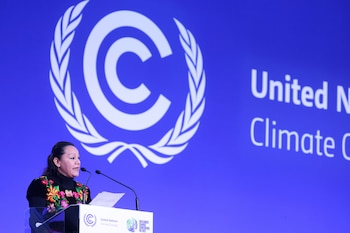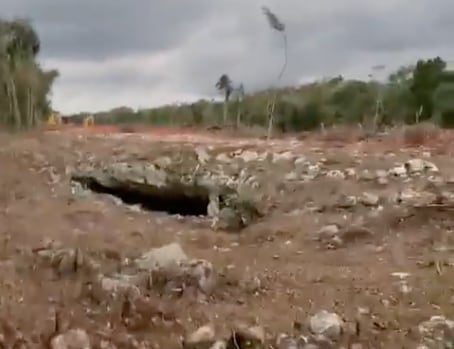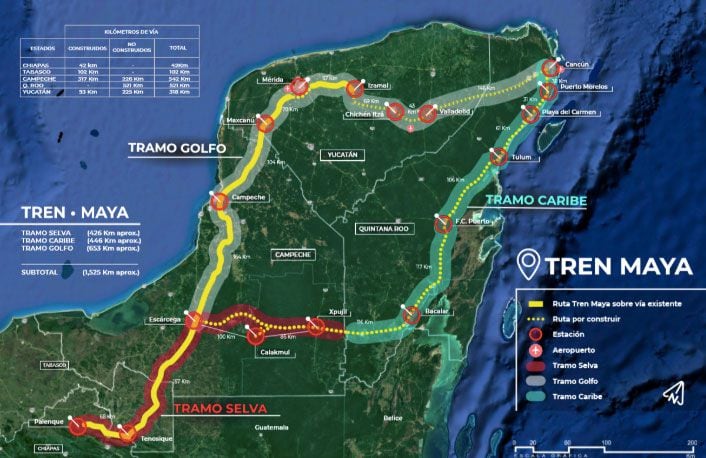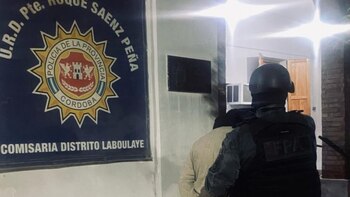
The Secretariat of Environment and Natural Resources (Semarnat), headed by María Luisa Albores, asked the Chamber of Deputies to schedule the meeting to discuss what happens to section five of the Maya Train at a date after the Mandate Revocation, scheduled for Sunday, April 10.
Deputy Karen Castrejón Trujillo, of the Green Ecologist Party of Mexico (PVEM), proposed to the Committee on Environment and Natural Resources to wait until that date to pass to meet with Semarnat officials and learn the official information and subsequently determine whether to visit the works carried out on the stretch that goes from Cancun to Tulum.
Morena's deputy, Joaquín Zebadúa, considered that the meeting should not necessarily be with the Secretary of the Environment, María Luisa Albores, and said that before going to the area, it is necessary to gather technical elements to obtain timely information on the ground.
This possible meeting takes place within the framework of the allegations of possible ecological damage that works on underground systems (cenotes) will have on the grounds, considering that the outline was modified as we go. In addition to alerts for possible sinking in the area.

This Wednesday, March 30, Senators de Morena and his allies from the PES, PVEM and PT imposed themselves against the opposition seeking the appearance of Rogelio Jiménez Pons, former head of the Maya Train, and Javier May Rodríguez, the new manager of the project, to explain what he considers anomalies in the planning and execution of works in the Yucatan Peninsula.
With 52 votes against these appearances, 39 in favor and four abstentions, the Plenum of the Upper House rejected the point of agreement calling these two federal officials to account.
The purpose was for Jiménez Pons and May Rodríguez to explain the actions for the unnecessary cutting, removal and transplantation of more than 20,000 trees located on federal highway 307 Cancún-Tulum, as well as other environmental damage in the region.
Senator Panista, Xóchitl Gálvez stressed that the removal of the 20,000 trees was not authorized by the November 2020 Environmental Impact Manifestation (MIA) on the Maya Train construction project or considered as forest loss, or at least Fonatur does not have it published on its website, so the apparecencia addresses this inconsistency between the actions implemented with those carried out.

To conclude the works on the Maya Train within the deadlines announced by President Andrés Manuel López Obrador, a new line has been made that not only affects the jungle - where thousands of trees have been cut down - but also to underground rivers, caves and cenotes, this has been reported by several non-governmental organizations (NGOs), which have shown some images of the destruction of the environment in Quintana Roo, a place known not only for its beautiful beaches nestled in the Mexican Caribbean, but also for its immense natural wealth and cultural.
Section 5 South, which covers Playa del Carmen and Tulum, is 60.3 kilometers long and was planned to be by an overpass which was being built on federal highway 307 Playa del Carmen-Tulum. But in the hurry to finish the works by the end of 2023, it will now pass at ground level through the jungle area that runs parallel to that federal road.
Although the government's argument is that the modification of the route “is the best decision” since it will not affect economic activity in the region and will meet the date set by the president, environmental groups say there are numerous environmental impacts.
KEEP READING:
Últimas Noticias
Debanhi Escobar: they secured the motel where she was found lifeless in a cistern
Members of the Specialized Prosecutor's Office in Nuevo León secured the Nueva Castilla Motel as part of the investigations into the case

The oldest person in the world died at the age of 119
Kane Tanaka lived in Japan. She was born six months earlier than George Orwell, the same year that the Wright brothers first flew, and Marie Curie became the first woman to win a Nobel Prize

Macabre find in CDMX: they left a body bagged and tied in a taxi
The body was left in the back seats of the car. It was covered with black bags and tied with industrial tape
The eagles of America will face Manchester City in a duel of legends. Here are the details
The top Mexican football champion will play a match with Pep Guardiola's squad in the Lone Star Cup

Why is it good to bring dogs out to know the world when they are puppies
A so-called protection against the spread of diseases threatens the integral development of dogs




